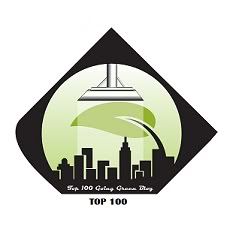Nanomedicine is an application of nanotechnology in the field of medicine. Nanotechnology is mostly upcoming, which is why we think it will permit dramatic progress in human medical services.
At most times judging the simplest of problems is very difficult when we look at the situation on the whole. With Nanomedicine, we will be able to think of today's incurable diseases as curable tomorrow, by looking at a problem at its molecular and atomic levels.
Till now scientists have dissected animals and other creatures to attain more knowledge about the matter from which they are made of, and often succeeded in finding out more than they needed. This has indeed helped in curing so many diseases, proved so many theories wrong and has also seemed only good for the future of the human race.
We have learnt from our experiences of measuring Human Externalities as the only means of progress, there has been no noticeable change in the timescale of the human civilization. Even though we have progressed since that time, it is most difficult to judge how useful nanotechnology can be in the field of medicine and what the side-effects of such means of treatment may be.
This may be the reason (we assume) because of which Nanomedicine is not developing today as fast as other technologies. Our strategy of using Nanomedicine maybe completely wrong, but at the same time, it may be right to some extent. But continuing research will only help us in the long run, as it will certainly help us understand the functions of the 100,000 proteins that the human body is made of. What will help us with this procedure is our existing vast knowledge in various fields like Physics, Chemistry, Math and IT.
People have taken interest in nanotechnology, but feel that its applications with too much progress may be misused and may in turn, cause chaos. Nanotechnology in this case, is often misunderstood as miniaturisation, which is a completely different phenomenon, currently not in our discussion.
In the cosmetic industry, nano-sized particles are already in use. For e.g. Zinc Oxide particles which are helpful in sunscreens are used in lotions and moisturizers. We have been using objects made of such nano-particles, for quite a long time, without thinking about howsoever harmful they may be.
The future of Nanomedicine Top ¬
Nanorobots are machines comparable to the size of a nanometre (10-9 metres). Though still largely theoretical, Nanorobots which will vary in size between the range of 0.1 and 10 micrometres, they will be constructed from nanoscale components.
Most medicines today, tend to destroy good cells along with the bacteria and viruses. With nanorobots (or nano-machines) we will be able to identify pathogens in body fluids, and destroy them without destroying the human immune system. Building nanorobots may indeed be very expensive, but the end product may help cure diseases like HIV AIDS which can only be prevented today and not cured.
An important precaution we must take while building such a machine, is to restrict its artificial intelligence to level upto which we may be able to have full control over it and not let it control our body instead. Inhibitor chips may have to be built into them so that there can be no connection between the human nervous system and the nanorobots.
We can only think of the bright side of Nanotechnology as such, because looking at any other aspect may only ruin the little progress that this field has got till now.
Thursday, August 7, 2008
nanomedicine
Posted by Meenu Khare at 8:12 PM
Subscribe to:
Post Comments (Atom)





0 Comments:
Post a Comment